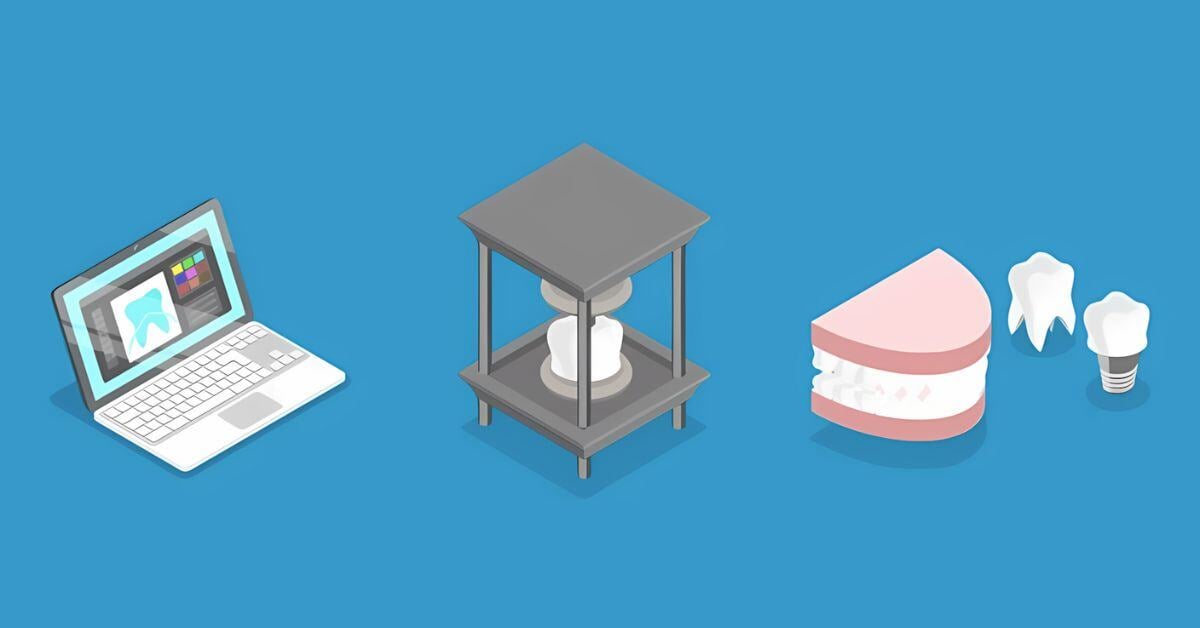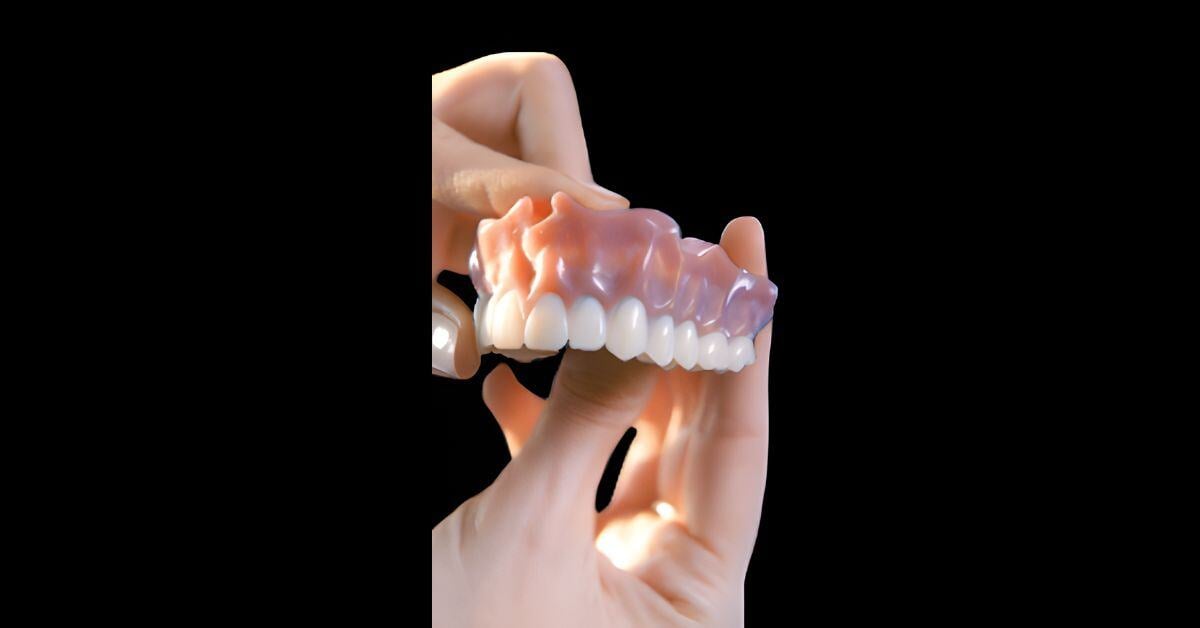Back in the day, handcrafting dentures was the norm. Dentists and dental technicians would work together to create custom-fitted dentures for patients, using traditional methods such as wax carving and casting. But this process was time-consuming and frequently resulted in ill-fitting dentures. With the advent of digital dentistry, this has all changed.
Today, dentists and dental labs can use advanced technology to create precise, comfortable, and aesthetically pleasing dentures for their patients. The process involves scanning the patient's mouth, the dental lab designing the denture digitally, and 3D printing it in a lab. Digital dentures result in better patient outcomes, reduced chair time, and improved efficiency for both the dental office and lab.
If you're a dentist interested in incorporating digital dentures into your practice, this guide will walk you through the process of crafting 3D dentures in a lab. From scanning to printing, we'll cover everything you need to know to successfully collaborate with your digital dental lab and deliver top-quality digital dentures to your patients.
What are 3D Printed Digital Dentures?
3D Printed Digital Dentures are the latest advancement in denture fabrication. They’re prosthetics designed using computer software and fabricated using 3D printing. 3D printing creates digital dentures that are highly precise and fit comfortably in the patient's mouth, unlike traditional handcrafted dentures, which can have inconsistencies and inaccuracies.
The process starts with using an intraoral scanner to digitally scan the patient's mouth. This scan captures all the necessary information, including the shape and size of the patient's gums, teeth, and jawline. The dental technician then uploads the digital file and designs the denture based on the patient's unique anatomy. After finalizing the design, they send it to a 3D printer for fabrication.
3D printers use biocompatible materials such as acrylic resin or polymeric composites to create dentures with a high level of accuracy and detail. The benefits of using 3D printing for dentures include improved fit, reduced production time, and the ability to easily make adjustments or corrections if needed.
The 3D Printed Digital Denture Workflow
The process of crafting digital dentures typically involves collaboration between the dental office and the lab. Both parties work together to scan, design, and print the denture. Below are the steps involved in the 3D Printed Digital Denture workflow.
Patient Consultation and Impressions
The first step in the process is to consult with the patient and evaluate their oral health and expectations for dentures. This initial assessment will help determine if they’re a good candidate for 3D Printed Digital Dentures.
Next, the dentist takes digital impressions using an intraoral scanner. These scans are highly accurate and eliminate the need for traditional impression materials that can be uncomfortable for patients.
Designing the Denture
Next, the dental technician uses digital software to design a custom denture based on the patient's digital impressions. This involves selecting the shape, shade, and occlusion of the teeth and adjusting aesthetics to create a natural-looking smile.
3D Printing the Denture
After finalizing the design, the lab fabricates the 3D Printed Digital Denture. The type of 3D printing technology that labs use can vary. Advanced labs use high-quality 3D printers specifically designed for dental applications.
The lab prints a denture using biocompatible materials. Once printed, the denture goes through post-processing steps such as post-curing—which strengthens the material—and finishing to smooth out any rough edges or imperfections.

Advantages of 3D Printed Digital Dentures
Why should you consider incorporating 3D Printed Digital Dentures into your practice? Consider these advantages that may convince you.
1. Precision and Fit
Thanks to the use of digital impressions and advanced technology, 3D Printed Digital Dentures have a much higher level of precision compared to traditional handcrafted dentures. This leads to better fit and fewer adjustments needed for the patient.
2. Customization
Each patient's mouth is unique, and 3D Printed Digital Dentures allow for a high level of customization. From selecting the shape and shade of teeth to adjusting aesthetics such as tooth position and gum contouring, you can create a denture that fits the patient's anatomy, preferences, and aesthetic goals.
3. Efficiency
If you're a dentist, you know that time is valuable. The turnaround time from consultation to final delivery of the denture is much faster with 3D Printed Digital Dentures compared to traditional methods. This means less chair time for your patients and increased efficiency for your practice.
4. Digital Record
The traditional denture process is destructive by stage. A patient who loses a traditional acrylic denture will need to start the lengthy process all over again to have a new one created. With 3D Printed Digital Dentures, the digital scans and digital designs are stored. A patient can have an exact replica created or work from an existing design to make minor tweaks to their fit, form, and function over time.
Challenges and Considerations
While digital dentures offer many benefits, there are also some challenges and considerations to keep in mind when incorporating them into your practice.
1. Learning Curve
As with any new technology, there’s a learning curve involved in mastering the use of intraoral scanners. Not all labs are equipped to master the art of digital design and printing. This may require additional training or resources for your office and lab to fully utilize the potential of digital dentures.
2. Initial Investment
Investing in digital equipment such as intraoral scanners can be costly. Still, many dentists find that the efficiency, improved patient outcomes, and overall satisfaction justify the initial investment.
3. Material Limitations
Some materials used for 3D Printed Digital Dentures may not fully replicate the properties of traditional denture materials, but advancements in material science are ongoing and continually improving.

Best Practices for Crafting Digital Dentures
To achieve success in creating 3D Printed Digital Dentures, it’s important to follow several best practices.
1. Stay Informed
As with any field, advancements in dental technology and materials are constantly evolving. To stay competitive, keep up with the latest trends and developments in digital dentures. This includes attending conferences and training sessions, networking with other professionals, and staying informed about new equipment and software releases.
2. Clear Communication
You and your lab should have a clear understanding of each other's workflows, capabilities, and expectations. Regular communication throughout the process can help avoid any misunderstandings or issues that may arise.
3. Ongoing Training
You and your team may need additional training in using intraoral scanners, CAD software, and 3D printers. Continuous education will help you make the most out of your digital denture workflow and stay up to date with new advancements.
When done right, the digital denture workflow can deliver accurate and comfortable dentures for patients while improving efficiency and outcomes for your practice. With this guide, you have the knowledge to successfully incorporate Digital 3D Printed Dentures into your dental practice. As technology continues to evolve, staying informed and adaptable will be key to thriving in this new era of dental prosthetics.
